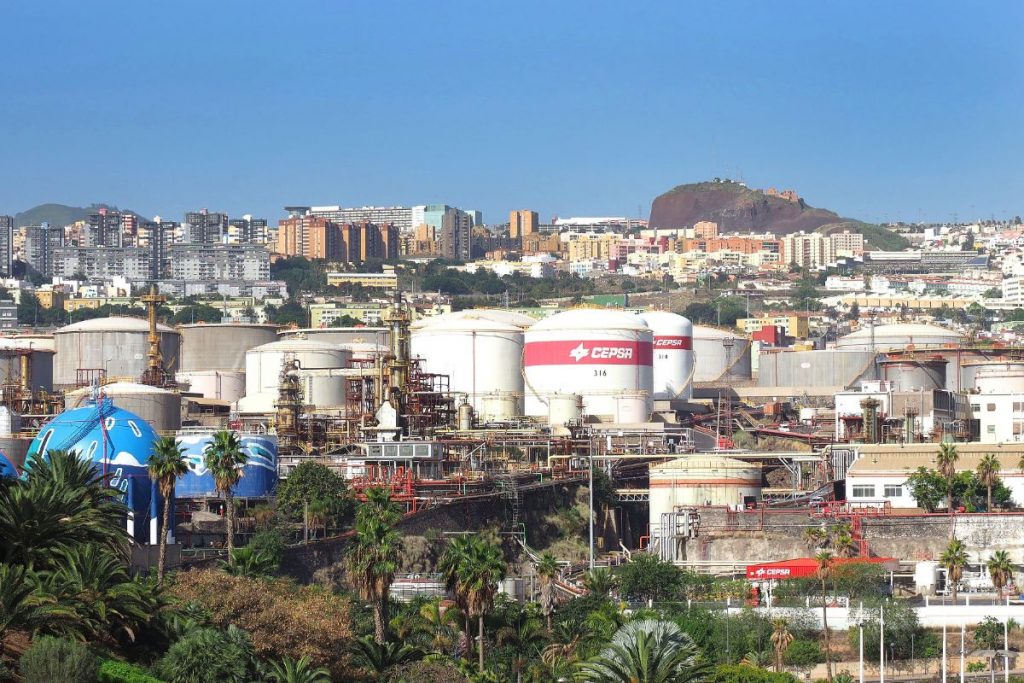Oil, a compound formed by a mixture of substances made up of carbon and hydrogen, called hydrocarbons, is found in large pockets buried hundreds of meters deep, forming layers or deposits in various areas of the earth’s crust, mainly in desert regions and under the bottom of lakes and oceans. This hydrocarbon originates from the decomposition of organic matter from large forests and animal remains that were buried in the different phases of the Earth’s formation due to the high temperatures and pressures existing at such depths over millions of years. years.
Oil is extracted by drilling the earth’s crust, until it reaches the deposit and thus opens its way to the surface; sometimes, the pressure of the gas contained in the bag is enough to make it come out, and in others, it is necessary to inject pressurized water to achieve this. Drilling is done with a very hard head drill placed in a tower called a derrick.
When the deposit is under the seabed, it is necessary to place the drilling towers on very expensive special platforms. From the place of production it is taken to the shipping ports through oil pipelines -large steel pipes thousands of kilometers long- through which it reaches the tankers, specially designed for this type of transport, and from here to the refineries.
In 1929, Mr. Preckler arrived in Santa Cruz de Tenerife, from Barcelona, with the purpose of capturing the demand for fuel from port traffic. In a meeting with the mayor of Santa Cruz, Santiago García Sanabria, and the president of the Port Works Board, Eloy Sansón, he explained to them the possibility of building, on behalf of Bethelenem Steelm, an oil refinery in our capital. . The location would be in the Pepe Concha and Las Monjas farms, located on the South Coast. The 900 daily pipes of water needed for the refining process would be brought from Arafo through the Araya canal.
Faced with the competition that the imminent inauguration of the refineryOn February 2, 1930, the English oil tanker Trophom of the Shell company arrived at the South Pier, coming from Curacao, which had been destined to serve as a pontoon for the supply afloat. This service was inaugurated on May 5, 1930 by the cruiser Almirante Cervera, of the Spanish Navy, and the next refueling would be carried out, on September 21, by the Plus Ultra of the Trasmediterránea Company. The last shipment of fuel for the aforementioned pontoon was brought by the Norwegian tanker Storaas, on January 29, 1931.

The assembly works of the Refinery It took eight months, and was inaugurated on November 29, 1930. Days before, the first Royal Navy tanker El Oleander had arrived, carrying 7,500 tons of Venezuelan crude. The second consignment, destined for the Cepsa warehouses, arrived on January 30, 1931, aboard the oil tanker Fontenac. The first freighter to refill her fuel tanks was the Hausten. In principle, the vis breaker refining unit had a capacity of 5,000 barrels/day, equivalent to 250,000 tons/year. The produced product was destined for the Peninsula, our poor insular market and the supply of stopover ships in the port.
The global economic crisis was on the verge of putting an end to the newly born industry, since manufacturing, handling and transportation costs were not covered. After this trial period, a terino gracking plant was installed, which allowed it to double its capacity and obtain a greater variety of better quality products.
The Spanish Civil War puts the Refinery back on the ropes, but it comes out again thanks to its autonomy; two years later, World War II -which at first led to a great deal of activity- was about to interrupt manufacturing due to the lack of oil tankers to bring the raw material.
As the Refinery was embedded within the city, between the North and South highways, in a declared leisure and recreation area, it was necessary to continuously measure the pollution parameters it produced; For this reason, through the Industrial Emissions Control (CEI) -a body that measures the concentration index of the nuclei with the highest industrial production- the chimneys were equipped with sensors that carried out measurements continuously, correcting themselves quickly if necessary.
At the same time, the aim was to avoid the visual impact produced by fuel tanks, both cylindrical and spherical. In this way, the initiative was taken for some Canarian painters to capture works of art in the tanks on the Penetration Avenue to the south.
The products obtained at the Refinery were liquefied petroleum gases (propane and butane), gasoline (513,000 tons/year), ATK or jet fuel (541,791 tons/year), automotive gas oils and fuels (low fuel oil). sulfur index). Since 1964, the Refinery had its own loading dock located in La Hondura, in order to keep the dangers of operations with flammable products away from the city. It is a 118-meter breakwater, with a draft of eight meters, where tankers of up to 25,000 tons can operate; the distribution service was carried out through a laying of metallic pipes of 1,250 tons/hour.
From this conventional wharf, crude import traffic -buoy field- and refined product exports -wharf and pontoon- were handled to the different islands of the Archipelago, Ceuta and Melilla, with a frequency that, in the case of Gran Canaria , becomes alternate.
The tankers (B/T) that carried out this task were: Mencey, which transports up to 6,000 tons of fuel; Nivaria, with 5,000 tons. of Gas Oil; Herbania and Junonia, 1,000 tons. gasoline and asphalt; and the Guanarteme, loaded with butane and propane.
















